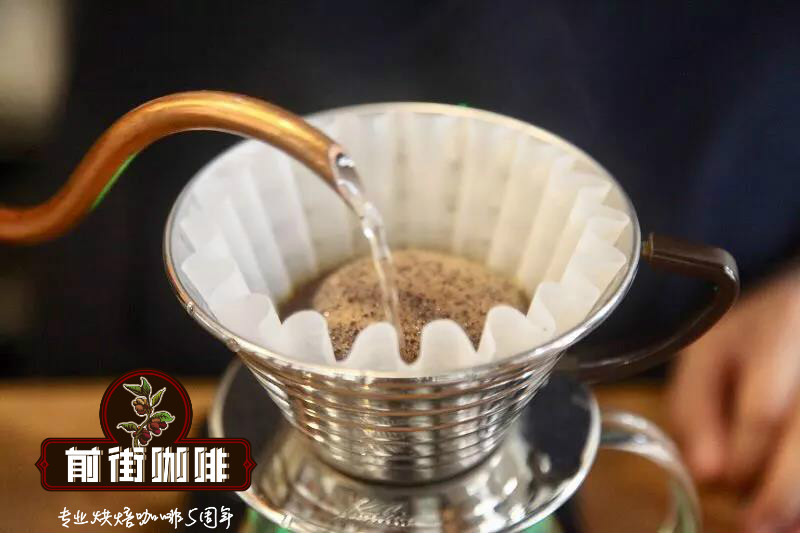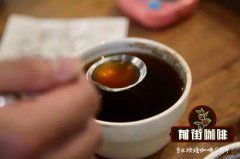What is God in a Cup? What are the flavor characteristics of geisha coffee? introduction to ABU Plantation

Professional coffee knowledge exchange more coffee bean information please follow the coffee workshop (Wechat official account cafe_style)
Geisha (Geisha) refers to the "source of coffee" in the mountains of western Ethiopia, not the traditional occupation in Japan. Such association will probably add a little bit of visual sadness. In fact, the story of geisha coffee is more like an ugly duckling: a coffee tree with weak, sickly, sparse side branches, low yield and inconspicuous appearance has settled on the Panamanian manor on the other side of the Atlantic. While arranging the arable land, the owner accidentally found that this unknown variety of coffee, cultivated in the soil of Central America, gave off an amazing flavor. In that year's National Competition (Best of Panama), the geisha (Hacienda La Esmeralda) of the Jade Manor scored a record-breaking 94.6 points. The description of one of the judges later became the title of the book recording the history of boutique coffee: God in a Cup.
good writings make people copy them. Since then, coffee farmers from all over the world have rushed to introduce what used to be Arabica. Tibica (Coffea Arabica var. Typica) variants of coffee. In order to improve yield and disease resistance, some farmers even grafted and mixed geisha with other beans. I have drunk geisha, including those from Panama, Guatemala, Colombia and Costa Rica. What they have in common is the strong aroma of jasmine, a hint of citric acid, and the sweetness of white grapes, bergamot and honey.
Tonight, the coffee shop has become a beauty pageant. The protagonist is geisha coffee from different places and processed in different ways.
"it's obviously from Panama, but it tastes as bright as Africa; the tail is soft and clean like washing, but the aroma is unrestrained and like the sun. Next to it is this year's national champion of El Salvador! Why have you been beaten? If I am qualified to be a judge, this one must be presidential. " (note: presidential, that is, more than 90 points)
ABU COFFEE is a geisha grown in the humid and rainy microclimate of typical tropical forests in the Boquete Ca ñ asVerdes area. Coffee trees grow on the slopes of Mount Baru National Park with fertile, deep soil, rich in organic matter and a good drainage system, reducing erosion.
The average altitude is 1550 meters. The shade of the farm is protected by growing native trees with rich local animals and plants and respecting the environment and biodiversity. In view of its strategic location, sunlight is a key element throughout the process. The plantation is exposed to strong solar radiation, disturbed by the gentle tropical mist properly known as Bajareque in the morning and sunset, and embraced by thick fog.
The harvest season begins in summer and lasts from December to March, and the months of falling humidity, combined with natural shadows and Bajareque fog, achieve a perfect balance of the ripening process. As a result, cherries reach their maximum potential and strengthen the sweetness in a good way, enriching the flavor of the grain.
The original rainforest where the ABU COFFEE plantation is located has a unique climate, which makes the geisha coffee at ABU Manor have a unique mellow degree and characteristics, rich juicy aroma and fragrant floral aroma.
Although ABU COFFEE is a young geisha farm with only two years of production, it took part in the Best Panamanian Coffee Competition for the first time in 2017 and finished sixth with a score of 91.516 for its washed GEISHA RESERVA LUTTRELL.
END
Important Notice :
前街咖啡 FrontStreet Coffee has moved to new addredd:
FrontStreet Coffee Address: 315,Donghua East Road,GuangZhou
Tel:020 38364473
- Prev

What are the processing methods of Dominican coffee in the six major coffee producing areas of Dominica?
For more information on coffee beans, please follow the Coffee Workshop (official Wechat account cafe_style) most of the coffee in the Dominican Republic is scattered over the six major producing areas, located in the western half of the valley and on steep slopes. These farms use the height, humidity, temperature and soil of each valley to create favorable conditions for coffee cultivation. Dominica coffee producing area
- Next

Introduction of Honduran Coffee Bean Grade introduction of Honduran Coffee Bean varieties
Professional coffee knowledge exchange more coffee bean information follow coffee workshop (Wechat official account cafe_style) Honduran coffee coffee quality in Honduras spans a huge range, from a low-cost Central American blender coffee to high-cost batches, comparable to dangerous coffee with acidity and flavor. Marcala,Copan and Santa Barbara,O
Related
- Detailed explanation of Jadeite planting Land in Panamanian Jadeite Manor introduction to the grading system of Jadeite competitive bidding, Red bid, Green bid and Rose Summer
- Story of Coffee planting in Brenka region of Costa Rica Stonehenge Manor anaerobic heavy honey treatment of flavor mouth
- What's on the barrel of Blue Mountain Coffee beans?
- Can American coffee also pull flowers? How to use hot American style to pull out a good-looking pattern?
- Can you make a cold extract with coffee beans? What is the right proportion for cold-extracted coffee formula?
- Indonesian PWN Gold Mandrine Coffee Origin Features Flavor How to Chong? Mandolin coffee is American.
- A brief introduction to the flavor characteristics of Brazilian yellow bourbon coffee beans
- What is the effect of different water quality on the flavor of cold-extracted coffee? What kind of water is best for brewing coffee?
- Why do you think of Rose Summer whenever you mention Panamanian coffee?
- Introduction to the characteristics of authentic blue mountain coffee bean producing areas? What is the CIB Coffee Authority in Jamaica?

